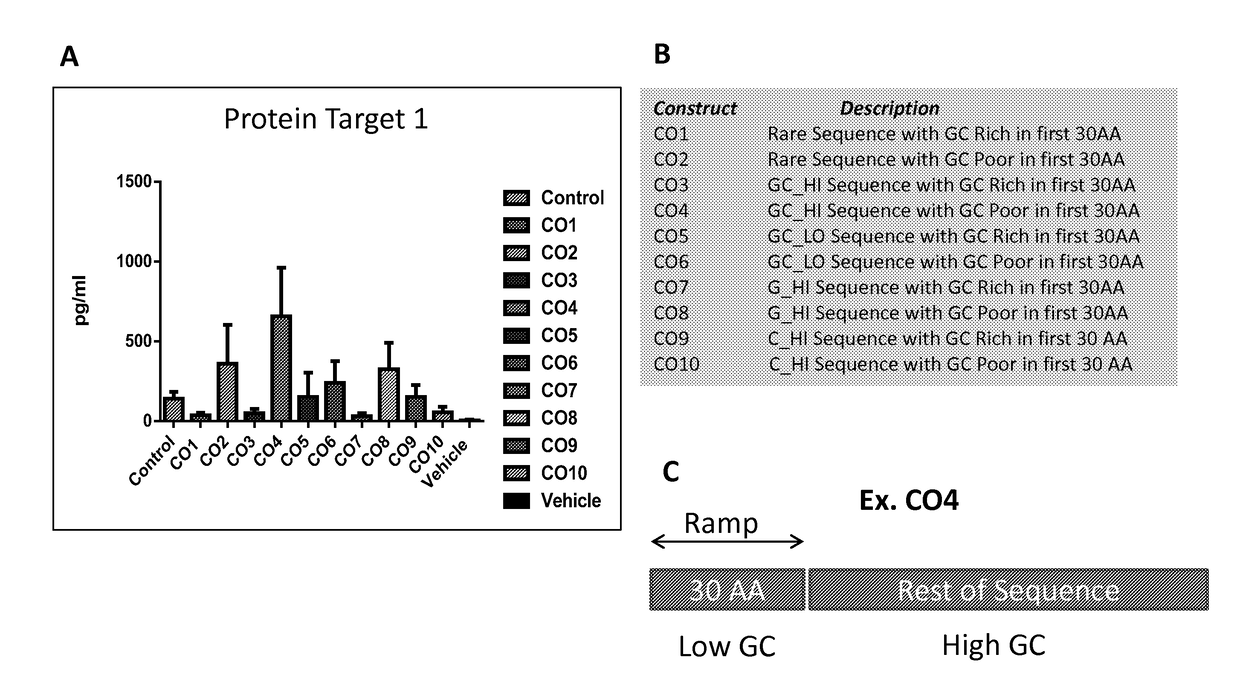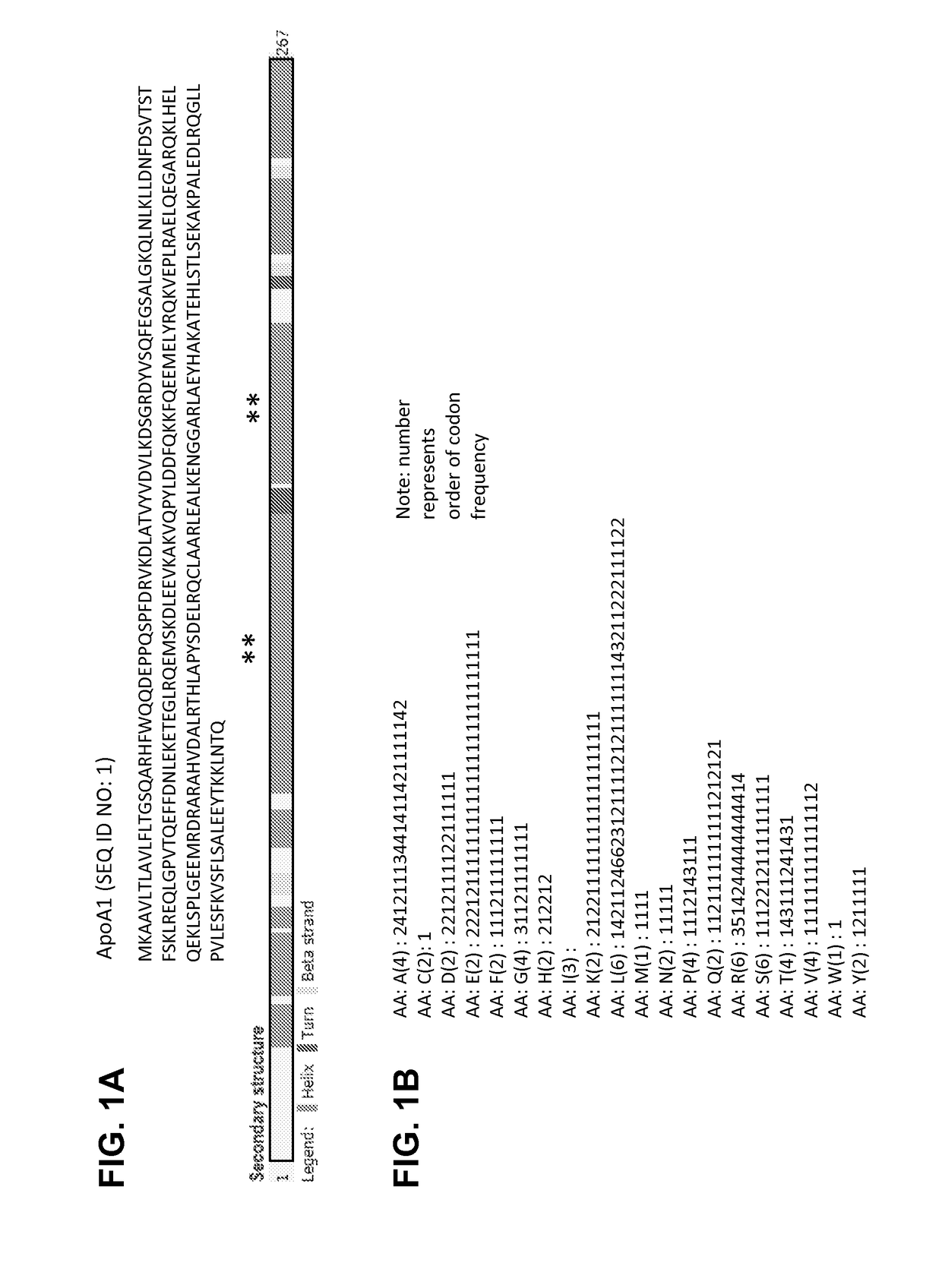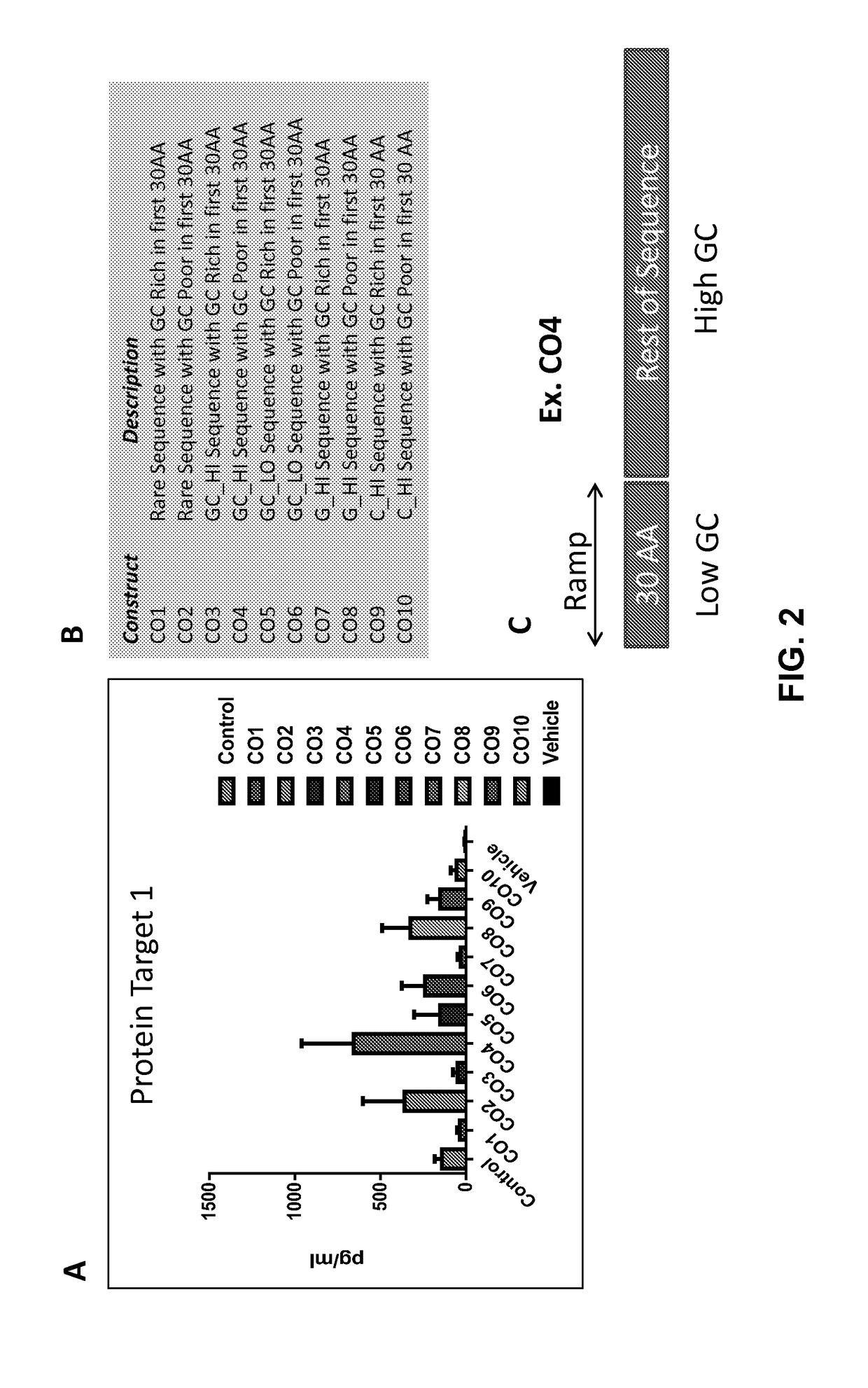Multiparametric nucleic acid optimization
a nucleic acid optimization and multi-parametric technology, applied in the direction of peptides, chemistry apparatus and processes, peptides/protein ingredients, etc., can solve the problems of codon optimization for nucleic acid therapeutics, potentially serious consequences, and conventional codon optimization techniques that are not suitable for mrna optimization in most cases, so as to increase the number of nucleic acids and improve translation efficiency , the effect of increasing transcription efficacy
- Summary
- Abstract
- Description
- Claims
- Application Information
AI Technical Summary
Benefits of technology
Problems solved by technology
Method used
Image
Examples
example 1
Ramp Design
[0720]FIG. 1A shows the sequence and secondary structures of ApoA1. The amino acid distribution shown in FIG. 1B shows that codons with the lower frequencies tend to cluster in the regions closer to the N-terminus, C-terminus, and central region of the two long alpha helical regions indicated by **. Such regions would be regions where translation rate would be slower (ramps). To test the role of G / C patterns and ramp composition, 10 biased codon sets (CO1 to CO10) were generated. Codon sets CO1, CO3, CO5, CO7 and CO9 were designed to introduce a GC rich ramp in the first 30 amino acids of the target protein (designate Target Protein 1). Codon sets CO2, CO4, CO6, CO8, and CO10 were created to introduce a GC poor ramp in the first 30 amino acids of the target protein. Codon sets CO1 and CO2 were composed of codons from rare sequences. Codon sets CO3 and CO4 were designed to introduce a high GC content in the sequence. Codon sets CO5 and CO6 were designed to introduce a low ...
example 2
Uridine Content Optimization
[0726]FIG. 5A shows the analysis of sequences encoding Protein Target 1 using a 20-mer sliding window to calculate the % of uridine over the length of the gene. The analysis was applied to two of the constructs generated and expressed in the previous example, CO3 and CO4, both of which were GC rich. The figure shows the theoretical maximum and theoretical minimum content for the two constructs. The graphic shows an almost perfect overlay between CO3, CO4, and the minimum uridine curve. The graphic also shows the ramp region in CO4. In the ramp region, the uridine content is close to the theoretical maximum uridine content. According to this data, reducing the GC content to the lowest possible values also results in the reduction of uridine to the lowest possible value.
[0727]FIG. 5B presents another set of curves analyzing sequences encoding Protein Target 1 using a 20-mer sliding window to calculate the % of uridine over the length of the gene. In this ca...
example 3
Uridine Content and Ramp Optimization
[0728]In order to decouple ramp and uridine optimization contributions, a “uridine light” ramp approach was designed. According to this strategy, an orthogonal set of codon maps was created using machine learning that minimized uridine content and uridine clustering in the final product. Fifty of the codon maps were un-biased codon maps. Another fifty codon maps were uridine-biased codon maps.
[0729]Luciferase was used as the target protein in this set of experiments. Relative amino acid prevalence in luciferase is shown in FIG. 6A. The 100 codon maps generated were combined and used to generate 100 luciferase gene constructs. Codon bias from uridine selection in normal constructs and uridine biased constructs in shown in FIG. 6B.
[0730]An exemplary uridine-biased codon map is shown in FIG. 7A, which also shows the distribution of amino acids encoded by those codons in the N-terminal 30 amino acids of luciferase (ramp region). Applying a 20-mer sli...
PUM
| Property | Measurement | Unit |
|---|---|---|
| Fraction | aaaaa | aaaaa |
| Fraction | aaaaa | aaaaa |
| Fraction | aaaaa | aaaaa |
Abstract
Description
Claims
Application Information
 Login to View More
Login to View More - R&D
- Intellectual Property
- Life Sciences
- Materials
- Tech Scout
- Unparalleled Data Quality
- Higher Quality Content
- 60% Fewer Hallucinations
Browse by: Latest US Patents, China's latest patents, Technical Efficacy Thesaurus, Application Domain, Technology Topic, Popular Technical Reports.
© 2025 PatSnap. All rights reserved.Legal|Privacy policy|Modern Slavery Act Transparency Statement|Sitemap|About US| Contact US: help@patsnap.com



